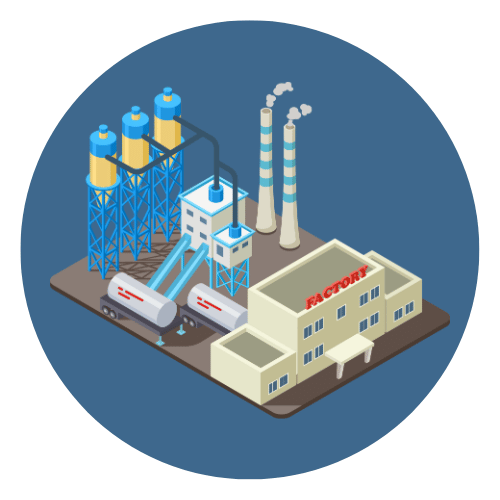Definition and Basic Function
A steam trap is a specialized valve used in steam systems to automatically discharge condensate, air, and other non-condensable gases while preventing the loss of live steam. By removing condensate from the steam lines, steam traps ensure that steam remains dry, which is crucial for efficient heat transfer and preventing damage to equipment.
Condensate forms when steam loses heat and condenses back into water. This can happen in steam pipes, heat exchangers, and other steam-using equipment. The presence of condensate can lead to water hammer, corrosion, and reduced efficiency. Steam traps are designed to open and close automatically, allowing only condensate and non-condensable gases to pass through while retaining live steam.
Role in Steam Systems
Steam traps play a crucial role in steam systems by maintaining the desired steam quality. They ensure that steam-using equipment receives dry steam, which is essential for efficient heat transfer and process control. By removing condensate, steam traps prevent water hammer, corrosion, and other issues associated with condensate accumulation.
In a steam system, the primary objectives are to deliver steam to the point of use efficiently and to remove condensate effectively. Steam traps help achieve these objectives by performing the following functions:
- Discharge Condensate: Steam traps remove condensate from steam lines and equipment, preventing it from accumulating and causing problems.
- Prevent Steam Loss: Steam traps retain live steam within the system, ensuring that it is used effectively for heating and other processes.
- Remove Air and Non-Condensable Gases: Steam traps also discharge air and other gases that can accumulate in the system, improving heat transfer and preventing corrosion.
Importance of Steam Traps in Energy Efficiency and Safety
Steam traps contribute significantly to energy efficiency by ensuring that only condensate and non-condensable gases are discharged, while live steam is retained within the system. This reduces steam wastage and minimizes fuel consumption. Additionally, steam traps enhance safety by preventing water hammer and reducing the risk of pipe bursts and equipment damage.
The energy efficiency benefits of steam traps are substantial. Properly functioning steam traps help maintain the thermal efficiency of the system, reducing the need for additional fuel to generate steam. This leads to cost savings and lower greenhouse gas emissions. Furthermore, by preventing water hammer and other issues, steam traps enhance the safety and reliability of the steam system, reducing the risk of accidents and equipment failures.
Types of Steam Traps
Mechanical Steam Traps

Mechanical steam traps use mechanical principles to discharge condensate. They are known for their reliability and ability to handle varying condensate loads. The two main types of mechanical steam traps are Float and Thermostatic (F&T) traps and Inverted Bucket traps.
Float and Thermostatic (F&T) Traps
Float and thermostatic steam traps operate using a float mechanism that rises and falls with the condensate level. The thermostatic element responds to the temperature of the condensate. When condensate enters the trap, the float rises, opening a valve to discharge the condensate. The thermostatic element opens the valve to release air and non-condensable gases. This type of trap is highly efficient in removing large volumes of condensate and is suitable for applications with varying condensate loads.
Inverted Bucket Traps
Inverted bucket traps use a buoyant bucket that floats on the condensate. When steam enters the trap, the bucket rises and closes the discharge valve. As condensate collects, the bucket loses buoyancy, sinks, and opens the valve to discharge the condensate. This type of trap is durable and can handle dirt and scale effectively, making it suitable for harsh industrial environments.
Thermodynamic Steam Traps

Thermodynamic steam traps use the dynamic properties of steam and condensate to operate. They are compact, reliable, and can function in a wide range of pressures and temperatures. The main types of thermodynamic steam traps are Disc traps and Impulse traps.
Disc Traps
Disc traps operate based on the dynamic effect of flash steam as it passes through the trap. When steam enters the trap, the disc is forced against the seat by the pressure of the incoming steam, preventing steam loss. As condensate collects, the pressure drops, allowing the disc to lift and discharge the condensate. Disc traps are compact, reliable, and can operate in a wide range of pressures and temperatures.
Impulse Traps
Impulse traps use the pressure difference between steam and condensate to operate. Steam entering the trap creates a pressure drop that closes the valve, preventing steam loss. As condensate accumulates, the pressure decreases, allowing the valve to open and discharge the condensate. Impulse traps are suitable for high-pressure applications and provide efficient condensate removal.
Thermostatic Steam Traps

Thermostatic steam traps operate based on temperature differences between steam and condensate. They are versatile and can be adjusted to operate at different temperatures. The main types of thermostatic steam traps are Bimetallic traps and Balanced Pressure traps.
Bimetallic Traps
Bimetallic steam traps utilize bimetallic strips that bend in response to temperature changes. When steam is present, the strips bend and close the valve. As condensate accumulates and the temperature drops, the strips return to their original position, opening the valve to discharge the condensate. Bimetallic traps are versatile and can be adjusted to operate at different temperatures, making them suitable for a variety of applications.
Balanced Pressure Traps
Balanced pressure steam traps use a thermostatic element filled with a volatile liquid. When steam is present, the liquid evaporates, causing the element to expand and close the valve. As condensate collects and the temperature drops, the liquid condenses, contracting the element and opening the valve to discharge the condensate. Balanced pressure traps provide precise temperature control and are ideal for applications requiring accurate condensate removal.
Comparison of Different Types
Each type of steam trap has its advantages and limitations. Mechanical traps are robust and can handle large volumes of condensate, but may be susceptible to wear and tear. Thermodynamic traps are compact and reliable, but may not be suitable for low-pressure applications. Thermostatic traps offer precise temperature control but may require periodic adjustment and maintenance. The choice of steam trap depends on the specific requirements of the steam system, including pressure, temperature, and condensate load.
Components of a Steam Trap
Steam traps are intricate devices composed of several components working together to perform their essential function of removing condensate and non-condensable gases from steam systems. Understanding the components of a steam trap can help in selecting, maintaining, and troubleshooting these devices. Here is a detailed overview of the key components found in various types of steam traps:
1. Body
The body of a steam trap houses all the internal components and provides the structural integrity necessary to withstand the pressures and temperatures of steam systems. The body can be made from materials such as cast iron, steel, or stainless steel, depending on the application and operating conditions.
2. Inlet and Outlet Ports
Inlet and outlet ports are connections that allow steam and condensate to enter and exit the steam trap. The size and configuration of these ports vary depending on the type and capacity of the steam trap. Properly sized ports ensure efficient flow and operation of the trap.
3. Valve Mechanism
The valve mechanism is the core component that controls the opening and closing of the steam trap, allowing condensate and non-condensable gases to be discharged while preventing the escape of live steam. The design of the valve mechanism varies depending on the type of steam trap:
- Mechanical Traps: Use floats or buckets to operate the valve. For example, in Float and Thermostatic (F&T) traps, a float rises and falls with the condensate level, opening or closing the valve accordingly.
- Thermodynamic Traps: Utilize discs or pistons that respond to the dynamic properties of steam and condensate. In disc traps, the valve is controlled by the pressure and velocity changes caused by steam and condensate flow.
- Thermostatic Traps: Use temperature-sensitive elements, such as bimetallic strips or bellows, to control the valve. These elements expand or contract based on the temperature of the condensate, opening or closing the valve as needed.
4. Thermostatic Element
In thermostatic steam traps, the thermostatic element is a key component that responds to temperature changes. This element can be a bimetallic strip, bellows filled with a volatile liquid, or other temperature-sensitive devices that react to the temperature difference between steam and condensate.
- Bimetallic Strip: Made of two different metals with varying expansion rates, the strip bends as the temperature changes, opening or closing the valve.
- Bellows: Filled with a volatile liquid that evaporates and condenses in response to temperature changes, causing the bellows to expand or contract and operate the valve.
5. Float (Mechanical Traps)
In mechanical steam traps, the float is a buoyant component that rises and falls with the level of condensate. The movement of the float directly controls the valve mechanism. Floats can be spherical or cylindrical and are typically made from corrosion-resistant materials to ensure longevity.
6. Bucket (Inverted Bucket Traps)
In inverted bucket traps, the bucket is an inverted vessel that floats on the condensate. When steam enters the trap, the bucket rises and closes the valve. As condensate accumulates, the bucket loses buoyancy, sinks, and opens the valve to discharge the condensate. The bucket is usually made of stainless steel or similar durable material.
7. Disc (Thermodynamic Traps)
In thermodynamic steam traps, the disc is a flat, circular component that moves between the seat and the cap. The disc responds to pressure changes caused by steam and condensate flow, opening and closing the valve. The disc is typically made from hardened steel or other wear-resistant materials.
8. Seat
The seat is a critical component where the valve mechanism seals to prevent steam loss. The seat must be precisely machined to ensure a tight seal when the valve is closed. The material of the seat is chosen for its durability and ability to withstand the pressures and temperatures of the steam system.
9. Strainer
A strainer is an optional component that can be integrated into the steam trap to filter out dirt, scale, and other debris from the steam and condensate. This helps prevent clogging and prolongs the life of the steam trap. The strainer is typically made from stainless steel mesh and can be cleaned or replaced as needed.
10. Air Vent
Some steam traps include an air vent to allow the discharge of air and other non-condensable gases from the system. This is particularly important during system startup when air is present in the steam lines. The air vent can be a separate component or integrated into the thermostatic element.
11. Check Valve
A check valve can be included in some steam traps to prevent backflow of condensate and steam. This ensures that the condensate is discharged in one direction only, maintaining the efficiency and safety of the steam system.
12. Cap and Gasket
The cap covers the internal components of the steam trap and provides access for maintenance and inspection. The gasket ensures a tight seal between the cap and the body, preventing leaks. Both components must be made from materials that can withstand the operating conditions of the steam system.
How Does a Steam Trap Work?

Principles of Operation
The primary function of a steam trap is to distinguish between steam and condensate, allowing the latter to be discharged while retaining the former within the system. Steam traps operate based on principles such as density, temperature, and dynamic effects.
Detailed Workings of Each Type of Steam Trap
Mechanical Traps
Mechanical traps, such as float and thermostatic traps, use a float mechanism to sense the level of condensate. When the condensate level rises, the float lifts, opening a valve to discharge the condensate. The thermostatic element responds to the temperature, ensuring that air and non-condensable gases are also vented.
Thermodynamic Traps
Thermodynamic traps, like disc traps, rely on the dynamic effect of steam and condensate. When steam enters the trap, it creates a pressure drop that forces a disc against a seat, preventing steam escape. As condensate collects, the pressure drops, allowing the disc to lift and discharge the condensate.
Thermostatic Traps
Thermostatic traps, such as bimetallic and balanced pressure traps, use temperature-sensitive elements to control the discharge of condensate. These elements expand or contract in response to temperature changes, opening or closing a valve to regulate the discharge.
Differences in Operational Mechanisms
The operational mechanisms of steam traps vary based on their type. Mechanical traps rely on buoyancy and temperature differences, thermodynamic traps use dynamic pressure changes, and thermostatic traps respond to temperature variations. Each mechanism has its advantages and is suited to specific applications and operating conditions.












 Automation System
Automation System  Energy Engineeing
Energy Engineeing  Instrumentation System
Instrumentation System  Mechanical Engineeing
Mechanical Engineeing  Piping Technologies
Piping Technologies  Transportations
Transportations  Manufacturing
Manufacturing  Training Material
Training Material 





